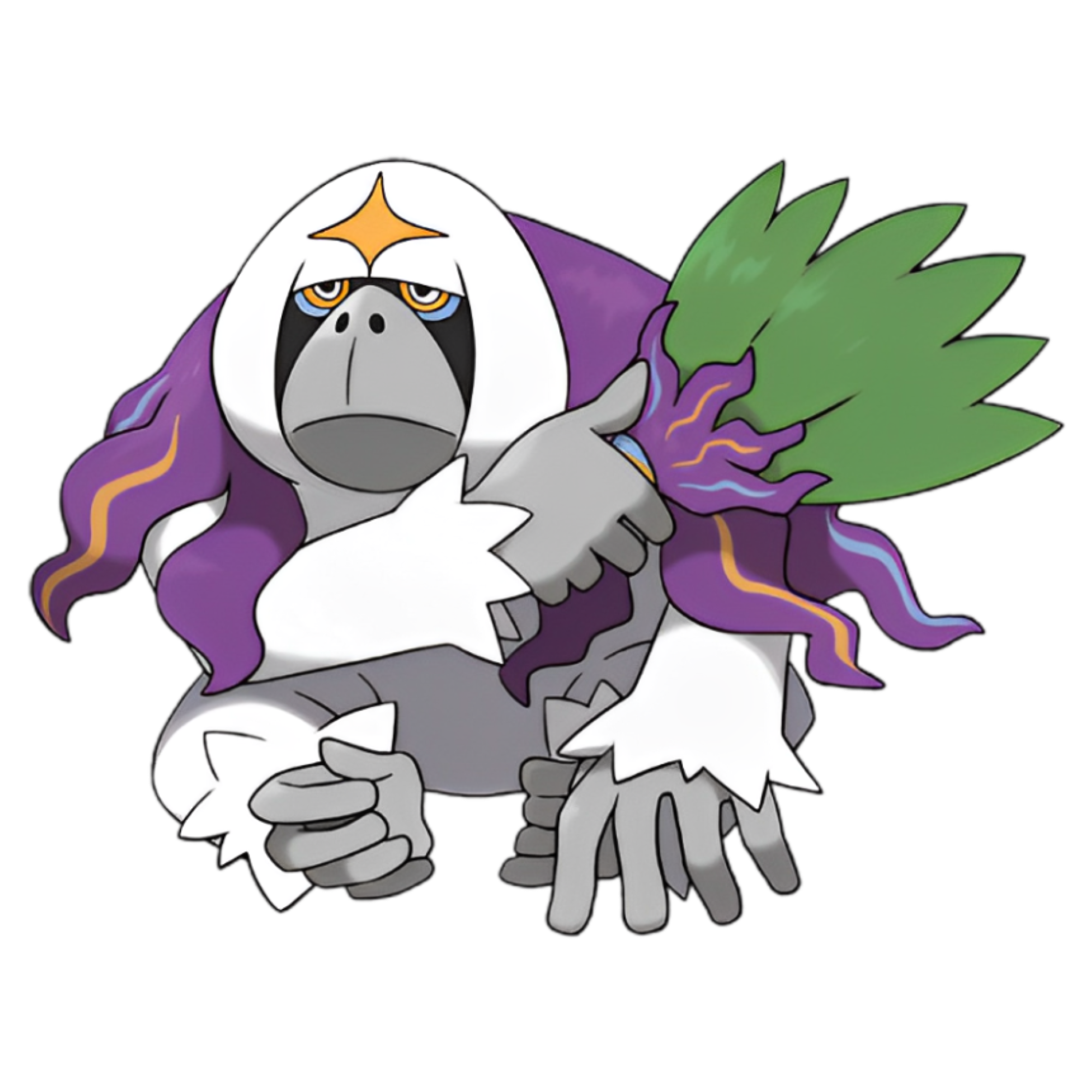Facts for Kids
Oranguru is a wise Sage Pokémon known for its calming presence and psychic abilities, often acting as a guardian in the forest.
Overview
Related Species
Conservation Status
Trivia And Fun Facts
Cultural Significance
Diet And Feeding Habits
Habitat And Distribution
Physical Characteristics
Behavior And Social Structure

Inside this Article
Personality
Lurantis
Pokémon
School
Orange
Nature
Fruit
Food
Are
Did you know?
🧙♂️ Oranguru is known as the Sage Pokémon, emphasizing its wise and knowledgeable nature.
🍃 It has a unique Normal/Psychic typing, differentiating it from many other Pokémon.
🎩 Oranguru possesses the ability 'Instruct,' allowing it to command its allies to use their moves again.
🌳 Its design is inspired by the concept of orangutans and features a distinct white mane resembling a sage’s robes.
📝 In the Pokémon lore, Oranguru is often found in deep forests where it helps others and acts as a guardian.
🌌 It has a calm demeanor, often meditating, which allows it to maintain its psychic abilities.
👶 Oranguru evolves from the Pokémon Passimian, enhancing its abilities and role within the game.
🔮 It is known for using its psychic powers to create illusions and enhance the cooperation of its allies.
🌈 Oranguru has a height of approximately 1.5 meters (4'11") and weighs around 76 kilograms (167 lbs).
🎮 In Pokémon battles, Oranguru can be especially effective in double battles due to its support capabilities.
Introduction
Known as the Sage Pokémon, Oranguru first appeared in the Generation VII games, Pokémon Sun and Moon, which were released in 2016. This Pokémon is recognizable by its gray fur and big, wise eyes, and it can be found in the tropical regions of Alola. Oranguru loves to help others and is often seen meditating or thinking deep thoughts! 🌴
It has a unique design that looks like a blend of a monkey and a wise old sage.
Related Species
One of its closest relatives is Bewear, a bear-like Pokémon known for its strength and cuteness. Another related Pokémon is Shiftry, which is also a grass-type Pokémon that loves the forest. Both Pokémon share the feature of being connected to nature! 🐻
There are also many other Pokémon in the Alola region, such as Rowlet and Lurantis, that live in similar habitats and show how diverse the Pokémon world is!
Conservation Status
However, its design is inspired by real orangutans, which are endangered. In the real world, we should protect their habitats to ensure they can thrive. Pokémon like Oranguru encourage fans to learn about wildlife and the importance of saving animals in need! So, while you adventure in Pokémon, remember to admire and protect nature! 🌱
Trivia And Fun Facts
Did you know that Oranguru’s special ability is called "Inner Focus,” which helps it stay calm and focused? It can also learn various moves like Psychic and Hyper Beam! In Pokémon battles, its unique abilities can be very helpful! Oranguru is often seen carrying a big leaf that it uses like a tool. 🌿
It also enjoys playing games and has a fun personality in various Pokémon media like TV shows and movies!
Cultural Significance
This connection to wisdom can be seen in its meditative behavior and its role in helping other Pokémon. Fans of the franchise love Oranguru for its unique design and helpful nature. In some games, Orange Guru is known to assist trainers in battle by using its smart strategies, just like a wise teacher in school! ☀
️
Diet And Feeding Habits
Habitat And Distribution
These jungles are warm and full of tall trees, making it a perfect place for Oranguru to swing and play. Its favorite spots are quiet places where it can think and meditate. While Oranguru is mainly known from Pokémon games, it is inspired by real-life animals called orangutans. 🦧
However, you won't find similar Pokémon in every region of the Pokémon world, as Oranguru is unique to the Alola region!
Physical Characteristics
️♂️ Its body is covered in light gray fur, which is soft and cuddly. Oranguru has a large tuft of orange hair on its head and a long tail that helps it balance when sitting. Its hands are useful and can grip objects easily! This Pokémon has small, pointed ears and a serious expression, which shows it’s wise. Did you know that Oranguru has bright, yellow markings around its body? These help it stand out while living in its home!
Behavior And Social Structure
This Pokémon loves to meditate, which makes it peaceful. Oranguru is a social creature, often seen with its friends during the day. It is very nurturing, helping other Pokémon and even humans by sharing its wisdom! It enjoys living in groups where they communicate using different sounds and body language. Oranguru also plays fun games with its friends, and they sometimes share food with each other as a sign of friendship. 🤝

